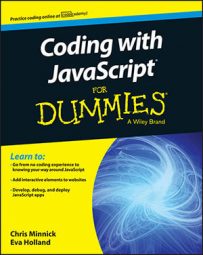Here is an extensive list of HTML5 APIs that have either been proposed or implemented. Browsers are constantly being updated with new features. For the latest on which browsers support which features, visit caniuse.com.
| API | What It Does |
|---|---|
| Ambient Light API | Provides information about the ambient light levels, as detected by a device’s light sensor. |
| Battery Status API | Provides information about the battery status of the device. |
| Canvas 2D Context | Allows drawing and manipulation of graphics in a browser. |
| Clipboard API | Provides access to the operating system’s copy, cut, and paste functionality. |
| Contacts | Allows access to a user’s contacts repository in the web browser. |
| Drag and Drop | Supports dragging and dropping items within and between browser windows. |
| File API | Provides programs with secure access to the device’s file system. |
| Forms | Gives programs access to the new data types defined in HTML5. |
| Fullscreen API | Controls the use of the user’s full screen for web pages, without the browser user interface. |
| Gamepad API | Supports input from USB gamepad controllers. |
| Geolocation | Provides web applications with access to geographical location data about the user’s device. |
| getUserMedia/Stream API | Provides access to external device data (such as webcam video). |
| History API | Allows programs to manipulate the browser history. |
| HTML Microdata | Provides a way to annotate content with computer-readable labels. |
| Indexed database | Creates a simple client-side database system in the web browser. |
| Internationalization API | Provides access to locale-sensitive formatting and string comparison. |
| Offline apps | Allows programmers to make web apps available in offline mode. |
| Proximity API | Provides information about the distance between a device and an object. |
| Screen Orientation | Reads the screen orientation state (portrait or landscape) and gives programmers the ability to know when it changes and to lock it in place. |
| Selection | Supports selecting elements in JavaScript using CSS-style selectors. |
| Server-sent events | Allows the server to push data to the browser without the browser needing to request it. |
| User Timing API | Gives programmers access to high-precision timestamps to measure the performance of applications. |
| Vibration API | Allows access to the vibration functionality of the device. |
| Web Audio API | API for processing and synthesizing audio. |
| Web Messaging | Allows browser windows to communicate with each other across different origins. |
| Web Speech API | Provides speech input and text-to-speech output features. |
| Web storage | Allows the storage of key-value pairs in the browser. |
| Web sockets | Opens an interactive communication session between the browser and server. |
| Web Workers | Allows JavaScript to execute scripts in the background. |
| XMLHttpRequest2 | Improves XMLHttpRequest to eliminate the need to work around the same-origin policy errors and to make XMLHttpRequest work with new features of HTML5. |

